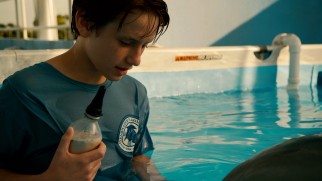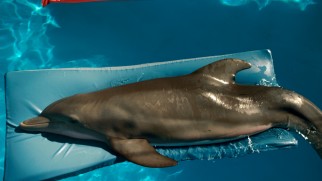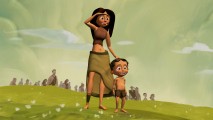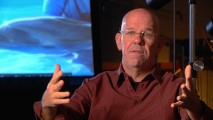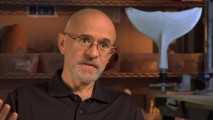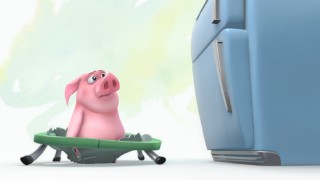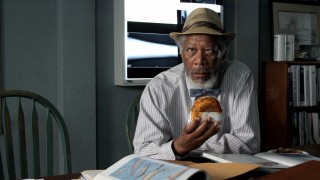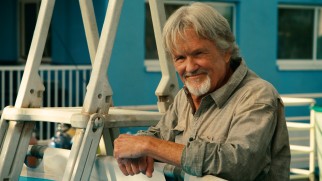Dolphin Tale: Blu-ray + DVD + UltraViolet Digital Copy Review
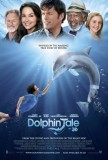 |
Dolphin Tale
Theatrical Release: September 23, 2011 / Running Time: 113 Minutes / Rating: PG / Songs List Director: Charles Martin Smith / Writers: Karen Janszen, Noam Dromi Cast: Harry Connick, Jr. (Dr. Clay Haskett), Ashley Judd (Lorraine Nelson), Nathan Gamble (Sawyer Nelson), Kris Kristofferson (Reed Haskett), Cozi Zuehlsdorff (Hazel Haskett), Morgan Freeman (Dr. Cameron McCarthy), Austin Stowell (Kyle Connellan), Frances Sternhagen (Gloria Forrest), Austin Highsmith (Phoebe), Betsy Landin (Kat), Juliana Harkavy (Rebecca), Megan Lozicki (Brittany), Jim Fitzpatrick (Max Connellan), Kim Ostrenko (Alyce Connellan), Michael Roark (Donovan Peck), Richard Libertini (Fisherman), Ray McKinnon (Mr. Doyle), Ashley White (Sandra Sinclair), Tom Nowicki (Philip J. Hordern), Rus Blackwell (Coach Vansky), Winter (Herself) |
Buy Dolphin Tale from Amazon.com: Blu-ray + DVD + UltraViolet Digital Copy • Blu-ray 3D + Blu-ray + DVD + UltraViolet
Digital Copy • DVD + UltraViolet Digital Copy • Movie-Only Blu-ray + UltraViolet Digital Copy • Instant Video
Dolphin Tale belongs to at least three major genres: family film, inspirational true story, and animal movie. It's also, rather oddly, a 3D production. All of these angles factored very clearly into the making of the picture, no doubt intended to appeal to and win over a large, diverse audience.
At the forefront of Dolphin Tale is Sawyer Nelson (Nathan Gamble), a shy pre-teen loner bummed to be attending summer school Sawyer sneaks into the facility where the dolphin is rehabilitating. There, he meets a fellow freckled youth, the friendly, outspoken, and home-schooled Hazel (Cozi Zuehlsdorff), whose father, Dr. Cory (Harry Connick, Jr.), runs the place. Sawyer learns that the dolphin, who has been named Winter, is not doing well. Cory is forced to amputate the creature's infected tail, without which it will be unable to swim or live independently.
Sawyer bonds with the damaged dolphin, blowing off school to be by Winter's side as her makeshift mother. Though Winter manages to swim without her tail, the adaption comes at grave risk to her spine and life. Sawyer theorizes that a solution may lie in kindly prosthetist Cameron McCarthy (Morgan Freeman), who has been working with the injured and back on leave Kyle. No one has ever heard of a dolphin surviving without a fin, nor have they heard of a tail prosthetic. But Winter is no ordinary dolphin, or so we are lead to believe.
I have conflicted feelings about Dolphin Tale. On the one hand, I like that there is room for such a film in today's marketplace: a sweet, wholesome, and sharp-looking movie hedging its hopes on concept more than its cast, which is comprised largely of new and forgotten actors. On the other hand, this is emotionally manipulative, saccharine, and highly calculated in its mechanics.
The film yanks at the heartstrings by piling on one hardship after another: war, a deadbeat father, a dead mother, financial woes, a hurricane, dismemberment, and so on. There is no way all these facts come from real life and that design renders the movie artificial and cornball. The overload of sympathy plays is not the film's only lapse in judgment. Room is shamelessly made for some 3D gimmickry, first in an utterly disposable and incongruous model helicopter flight scene and then in prosthetic computer graphics popping out at you. Not only will the intended effects be lost on the majority of people who will see it in standard 2D henceforth, but they will also stand to date the film tremendously, perhaps as the clearest example of studios latching too quickly and enthusiastically onto a format unlikely to be more than a cyclical fad.
It's hardly all bad, though. You'll need a heart of stone not to root for Winter to recuperate. Played by the real amputee dolphin on whom the film is based, the animal is as diverting as one can be without resorting to CGI gags or expanding beyond small tanks and pools. Director Charles Martin Smith has worked with animals on both sides of the camera, as the star of Never Cry Wolf and the director of the original Air Bud; he understands how to keep a nonverbal creature an endearing character.
I can't decide if it's depressing or encouraging to find Harry Connick, Jr. and Ashley Judd, hot up-and-comers of the late-'90s, claiming top billing in parental roles, each past 40 and with their once celebrated looks fading. Both do okay with the adequate material without making too strong a case for more lead roles coming their way.
The pluses and minuses of Dolphin Tale essentially cancel each other out, with the end result being amiable mediocrity. Most of the time when a movie tries so hard to please everyone, The film concludes with real footage of the dolphin rescue and rehabilitation, revealing that the human actors bear little resemblance to the people they portray.
Dolphin Tale was well received by critics and moviegoers alike, the latter making it one of the biggest hits of the pre-Thanksgiving fall movie season, although so far its success has been almost entirely a North American thing. The film made a slightly swifter than usual trip from theaters to disc, arriving just in time for Christmas with yesterday's releases on DVD, Blu-ray, and Blu-ray 3D. This review covers Warner's two-disc Blu-ray + DVD combo pack, whose digital copy is, as all new Warner ones, of the UltraViolet variety.
VIDEO and AUDIO Dolphin Tale looks breathtaking on Blu-ray. The 1.78:1 presentation is as vibrant and picturesque as any live-action movie I've seen on the format. It is a dazzling showcase for the many different shades of blue and something you'll relish having in the greatest resolution available. The 5.1 DTS-HD master audio soundtrack is impressive as well, crisply and tastefully delivering prominent score, dialogue, and the occasional splash and dolphin click. The 16:9-enhanced DVD included here is less striking, but in sampling, it didn't seem too greatly troubled by its lower resolution and higher compression.
BONUS FEATURES, MENUS, PACKAGING and DESIGN Extras begin with the short "Hutash's Rainbow Bridge" (2:25), which sets a Harry Connick Jr. monologue from the film to animation, some of it crude CGI. "At Home with Winter" (13:22) discusses the process of telling Winter's story with Winter playing herself. Starting with general motivations, the featurette narrows in on practical issues, like filming in water and protecting Winter from sunburn. "Spotlight on a Scene" (7:17) breaks down the film's opening sequence, from storyboards to shooting live-action plates in the Cayman Islands to computer-animating the dolphins to incorporating 3D. Director Charles Martin Smith and others discuss the processes at work, yielding a narrow but informative making-of featurette. "Winter's Inspiration" (18:08) tells more of the dolphin's true story. Her trainers, doctors, and rescuers recall the 2005 experience that the film dramatizes. It goes into detail and ties Winter's recovery into other inspiring amputation triumphs.
Rob Silvestri's Ormie and the Cookie Jar (3:59) is a computer-animated short about Ormie, a pig trying to reach the cookie jar atop his fridge. Sparsely animated, dialogue-free, and overly scored, this is a pretty lame attempt at a Pixar-style cartoon short. Its inclusion is utterly random; I have no idea why this is here. The deleted scene "Winter Meets Panama" (2:20) provides a twist ending and not a particularly coherent one to an existing scene from the film. Finally, a gag reel (2:45) collects a variety of unscripted moments, many of them amusing with unpredictable animals and human error. Although it doesn't have to be stripped down to make room for digital copies (which is relegated to a stream through the lamented UltraViolet service), the DVD here is not the one that is sold on its own. That one contains the deleted scene, Ormie short, and gag reel. This one has but a languages menu alongside a "Play" option The Blu-ray opens with a trailer for Joyful Noise, something that looks like it comes from some alternate universe, and an even more random Florida tourism commercial. Like most of Warner's present-day menus, this one has simple static reformats of poster art, which score plays over for a few minutes before going silent. The two discs take opposite sides of an eco-friendly Blu-ray case, the silver DVD covered by your combination digital copy/WB Insider Rewards code insert. The keepcase is topped by a cardboard slipcover, which for once offers something over the artwork below, namely holography.
CLOSING THOUGHTS There is a dearth of family films that aren't wisecracking computer-animated comedies. To that end, Dolphin Tale is a welcome something different. At the same time, its uplifting story is very by-the-numbers and treacly, more what you'd expect from a forgotten '90s family drama than a major new 3D motion picture. If a PG-rated animal movie in which the animal doesn't talk and fart sounds just like what you'd like to see, then definitely make a point to see this. Just don't expect the greatest tact and artistry. Warner's Blu-ray delivers a knockout feature presentation and a moderately pleasing forty minutes of extras. I can see families welcoming this into their collection and some of today's kids embracing it like their generation's Free Willy. Support this site when you buy Dolphin Tale now from Amazon.com: Blu-ray Combo Pack / Blu-ray 3D Combo Pack / DVD / Movie-Only Blu-ray / Instant Video
|
Related Reviews:
Buy Dolphin Tale: Original Motion Picture Soundtrack (Music by Mark Isham) from Amazon.com: CD • MP3 Download DVDizzy.com | DVD and Blu-ray Reviews | New and Upcoming DVD & Blu-ray Schedule | Upcoming Cover Art | Search This Site
DVDizzy.com Top Stories:
New: Mr. Popper's Penguins • Kung Fu Panda 2 • The Rocketeer • The Help • Rise of the Planet of the Apes
Soul Surfer • Secretariat • Eight Below • White Fang • Never Cry Wolf • Bridge to Terabithia • Flipped
Directed by Charles Martin Smith: Air Bud (Special Edition) | Starring Morgan Freeman: Invictus • Evan Almighty
The Lion King • African Cats • Dear John • Finding Nemo • Old Yeller • Where the Red Fern Grows
Dolphin Tale Songs List (in order of use): The Doobie Brothers - "World Gone Crazy", Zac Brown Band featuring Jimmy Buffett - "Knee Deep", The Chords - "Sh-Boom", "Everything Happens to Me", The Budapest Symphony Orchestra - "Ride of the Valkyries", Jason Mraz - "I'm Yours", Michael Wells and David Fowler - "Line Dance", Jerry King and the Rivertown Ramblers - "Second Guessin'", "Kings Road A", Ron Keel - "Made for Dancing", Westlife - "Safe"
Reviewed December 21, 2011.
Text copyright 2011 DVDizzy.com. Images copyright 2011 Warner Bros. Pictures, Alcon Entertainment, and Warner Home Video.
Unauthorized reproduction prohibited.
